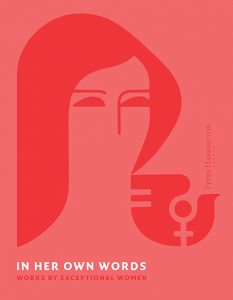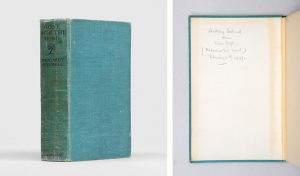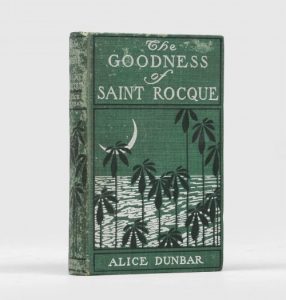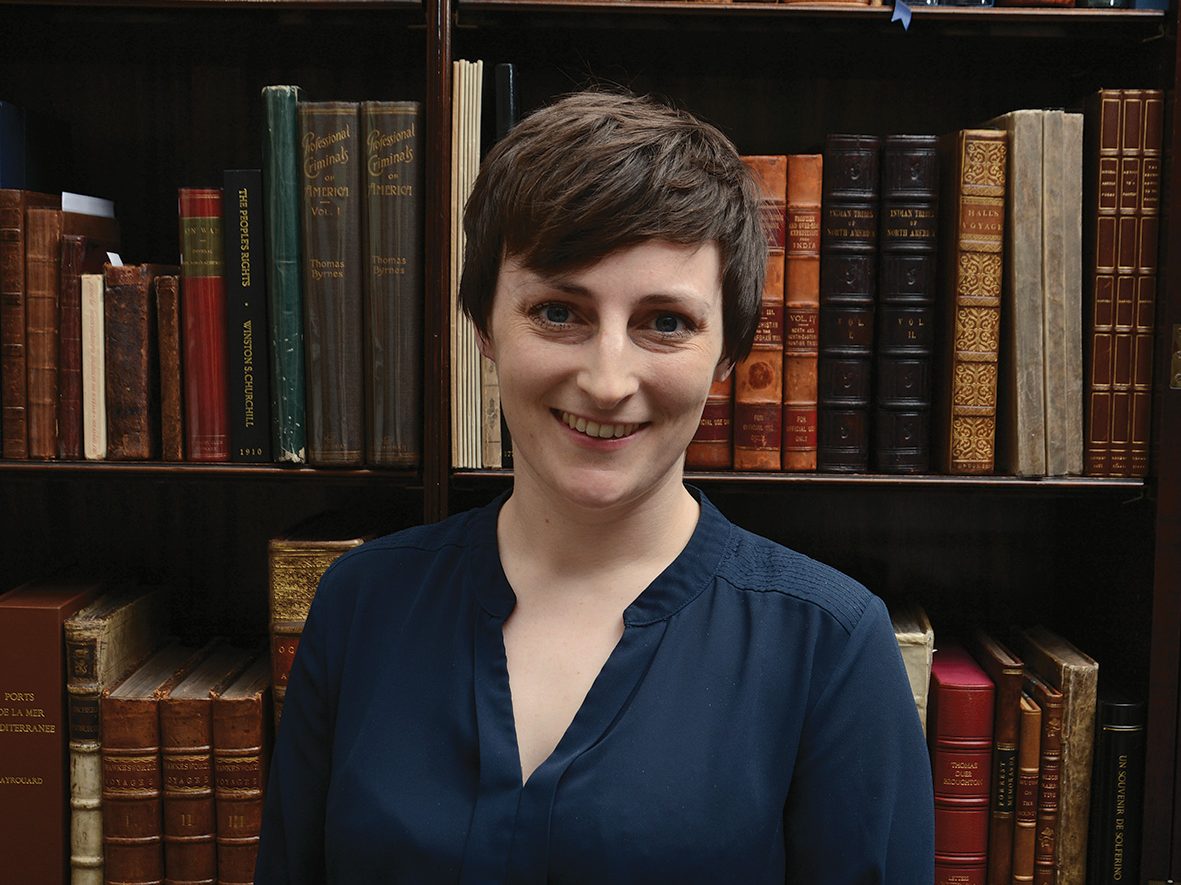Lauren Hepburn interviews Peter Harrington’s Theodora Robinson about her role as a cataloguer and some of the items she has worked with.
Tell us a bit about the importance of cataloguing – where does it sit within the rare book industry?
Rare book cataloguers inspect and write descriptions of the items acquired before they are presented to customers. At Peter Harrington every book, manuscript, photograph, or artwork is catalogued individually, which involves delivering a report on the condition of the item, checking the bibliographic details, and writing notes that explain to the client what the item is and why it is valuable.
How did you come to be a cataloguer at Peter Harrington?
I had finished my Masters degree in Greek and Latin Literature and was looking for jobs working with books and manuscripts. I came across Peter Harrington slightly by accident, as I actually hadn’t heard of the rare book trade at that point! I had been searching for positions at auction houses or in the heritage sector when Matthew Haley at Bonhams pointed me in the direction of rare book dealers; I scoured the Antiquarian Booksellers’ Association (ABA) vacancies page for about six months before the advert for my role came up.

What do you most enjoy about your role?
I enjoy pretty much every part of bookselling, but discussing our books with customers and researching items to buy or that we have acquired are my favourite aspects. There are so many projects to be a part of at Peter Harrington that it makes for a varied life, and because we exhibit at numerous international fairs there’s travel involved, too (mainly to the U.S., for me). One of my highlights so far has been creating Peter Harrington’s first catalogue of works by women, In Her Own Words: Works by Exceptional Women, which I produced with my colleague Emma Walshe. We’ve also just completed our latest Children’s Literature catalogue – it’s been about five years since we last published one with this theme, so it’s well overdue!
What does a day at the bookshop look like for you?
I wear a lot of different hats at Peter Harrington, so no two days are the same, but typically I’ll be editing a print catalogue, researching books to acquire, or cataloguing items we have bought. My role is quite dynamic, and it can change quickly if there is a customer who needs something urgently or if a new project starts swiftly. Recently, I had a very last-minute trip to New York which was booked just the day before I flew. That is unusual, though; usually I know about trips well in advance.
You’ve catalogued thousands of items – can you pick out a couple that have stood out to you as particularly special?
There are two pieces that just left my desk that I really enjoyed researching. The first is a Christmas gift from Beatrix Potter to her close friend Gertrude Mary Woodward. It’s quite unusual: a gift of a gilding set, not a book, and there was a lovely connection between the two women, who were both artists. Gertrude also helped Beatrix choose a printer to publish Peter Rabbit.
The second item is a manuscript account of the friendship and exploits of six young women during the Second World War. It is such an interesting and surprisingly entertaining insight into their lives against the backdrop of the war – despite their bombed houses and war work, there are amusing accounts of raucous evenings when they are on leave, including a run-in with a policeman on their way home one night. I also particularly loved the tale of how, on a day out, the girls got drenched in a sudden rain shower, so hung their wet clothes from the luggage rack of their train to dry: ‘the compartment soon looked like a gipsy encampment, so much so that a man, attempting to enter our carriage at a wayside station, gave one look at our wet belongings, exclaimed “Good Lord!” and shut the door again quickly!’
Cataloguing our copy of Gone With the Wind, inscribed by Vivien Leigh, was also special, and I visited The V&A Museum archives to compare her inscription in it with early samples of handwriting in her diaries. It is quite a remarkable item because the inscription pre-dates her landing the career-defining role of Scarlett O’Hara in 1938. Leigh had read Gone With the Wind at Christmas, 1936, and became obsessed with the idea of playing the female lead in producer David O. Selznick’s forthcoming film adaptation; she was so sure that she would get the role that she even presented a few copies of the book, including the one I catalogued, to fellow actors on the opening night of a stage play she was starring in, a bold two years before she was cast!
Finally, last year I was very excited to track down a copy of The Goodness of St Rocque by Alice Dunbar – the first published collection of short stories by an African-American woman – which we included in our women’s works catalogue.


DUNBAR, Alice. The Goodness of Saint Rocque and other stories. 1899.





